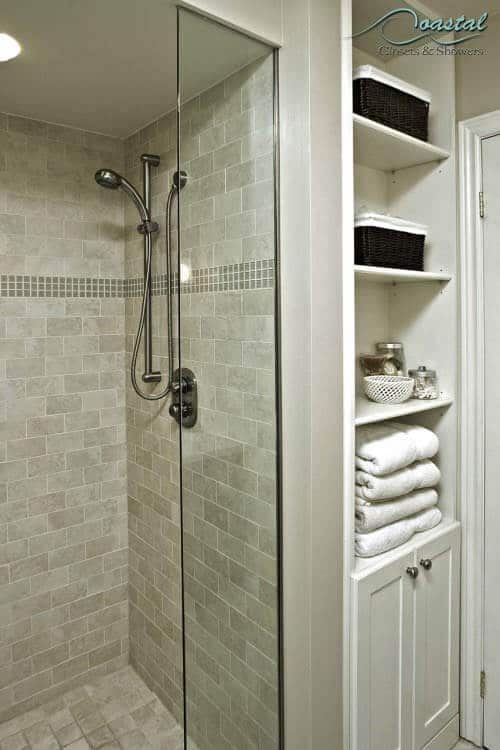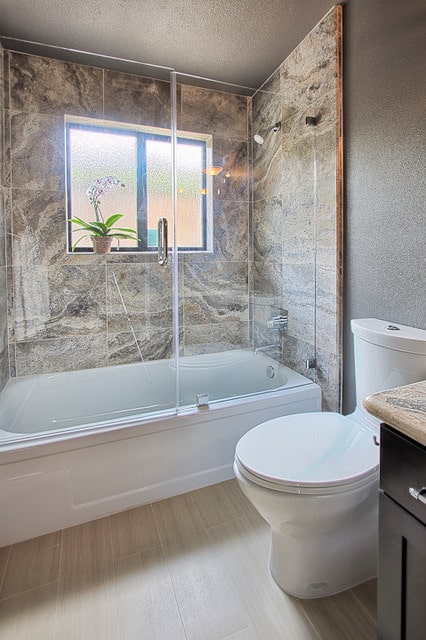High-Humidity Zones: Best Closet Materials for Florida Homes
Wondering which closet materials hold up best in Florida's climate? We break down all of your top choices and how to maintain your closet!

Living in Florida’s famously humid climate has its perks (sunshine, ocean breezes, and warm weather year-round!), but it can be tough on your closets. The damp air in high-humidity zones can seep into closets and slowly wreak havoc on certain closet materials.
The Best Closet Materials for Floridians
If you’ve ever dealt with swollen wood shelves or a musty odor in your closet, you know the culprit is excessive moisture. To keep your closets in great shape (and protect your clothes), it’s important to choose closet materials that can stand up to Florida’s humidity.
The Challenge of Florida’s Humidity
Florida’s heat and humidity create a breeding ground for mold and mildew, especially in enclosed spaces like closets. Standard closet materials might not cut it in this environment.
For example, untreated wood can warp or even grow mold in high humidity. That means a basic plywood shelf or particleboard organizer could start bending, peeling, or discoloring after a few summers in Florida’s moisture-heavy air. Likewise, any metal components that aren’t rust-resistant might corrode over time.
Closets are often tucked away in corners with little to no air circulation, which makes them even more vulnerable. When humidity lingers, it can damage your wardrobe on top of your closet materials. Clothing fibers absorb moisture, which can create that telltale musty smell or even lead to mold growth on fabric.
Leather shoes or bags can warp or crack, and delicate fabrics may lose their shape. Without the right materials and design choices, a Florida closet can quickly turn into a frustrating maintenance issue.
The good news is that closet design has improved to address these climate challenges. Today, there are moisture-resistant materials available that perform much better in humid conditions.
Selecting the right materials from the start will make sure your closet stays sturdy, safe for your wardrobe, and free of funky odors or fungi.
Top Moisture-Resistant Closet Materials
Not all closets are created equal – the materials they’re built from make a big difference in a damp climate. Here are some of the top closet material choices for Florida homes and other high-humidity zones:
Melamine-Coated Wood

Melamine is a durable laminate finish applied to engineered wood such as particleboard or MDF. It creates a smooth, non-porous surface that resists moisture and warping. Closets built with melamine-coated boards hold their shape even when the air is humid.
The melamine acts as a barrier, so the underlying wood isn’t exposed to the air. This means you get the sturdy feel of wood shelves but with a protective, easy-to-clean surface that won’t swell or peel as real wood might.
Melamine also comes in a wide range of finishes, including wood-grain looks, solid colors, and textured surfaces. This allows you to customize the appearance of your closet while still benefiting from durability.
Quality Plywood or Treated Wood
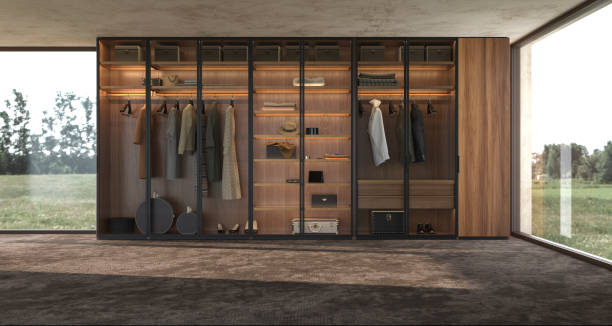
If you prefer a wood-grain look, opt for cabinet-grade plywood or wood that has been specially treated for moisture resistance. High-quality plywood offers strength and better resistance to warping compared to regular lumber.
Look for wood materials that are marked for exterior use or labeled as moisture-resistant. These have glues and coatings that help them withstand humidity. Always finish or seal any wood components with a waterproof sealant or paint for extra protection.
When done right, a treated wood closet can deliver both the natural warmth of wood and the toughness needed to withstand Florida’s conditions.
Metal and Wire Components
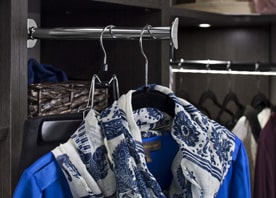
Metal is generally a smart choice in humid climates, provided it’s properly coated. Steel closet systems with a powder-coated finish are excellent at resisting moisture and won’t easily rust or corrode. The powder coat is a dry coating that bonds to the metal, sealing it from air and water.
Vinyl-coated wire shelving is another common choice in Florida homes. It doesn’t absorb moisture, and it encourages air to circulate around clothing, which helps prevent mildew.
Wire shelves are easy to wipe down, won’t warp like wood, and are lightweight but strong enough to hold stacks of clothes or bins.
Cedar Wood Accents
Cedar may seem like a luxury, but it’s actually very practical for humid areas.
Cedar wood is naturally resistant to humidity and even repels insects. This makes it a fantastic material for closet panels, shelving, or even small touches like cedar hanger bars or cedar drawer liners. Cedar contains natural oils that fight off mold and moths, keeping your clothes safer.
It also has the side benefit of a fresh, natural scent that can counteract mustiness. While you may not build an entire closet system out of cedar, incorporating cedar planks or blocks can help control moisture and odors inside the closet.
Combining Materials for Best Results
Each of these materials helps combat the effects of humidity in different ways. Often, the best approach is a combination. For instance, a closet system might use melamine shelves and cabinets, steel hanging rods, and cedar backing or inserts.
You want to make sure every component, from the shelves to the hardware, is chosen with moisture resistance in mind.
Ventilation and Hardware Matter Too
Choosing better materials is half the battle; how you design the closet is the other half. Proper ventilation is key in a Florida closet. Even the best materials can benefit from airflow to carry away humidity. Consider vented closet shelves or panels that allow air circulation around your clothes.
If your closet has doors, consider upgrading to slatted or louvered doors in humid climates. They allow moist air to escape, preventing it from being trapped inside.
You can also leave a small gap or install discreet vents in solid doors to improve air exchange. For walk-in closets or larger reach-ins, some homeowners even install a small exhaust fan or use dehumidifier packs to keep moisture levels down.
Don’t forget about the hardware and fixtures in your closet. In humid environments, it’s worth opting for stainless steel or brass hardware for rods, hinges, and handles. These metals are naturally resistant to rust and corrosion.
Standard steel may start to rust over time, staining your clothes or weakening the supports.
Similarly, choose screws and brackets with a galvanized or rust-proof finish. Although it might cost a bit more upfront, it will ensure your closet system remains sturdy and looks great for years to come.
Common Mistakes Florida Homeowners Make with Closet Materials
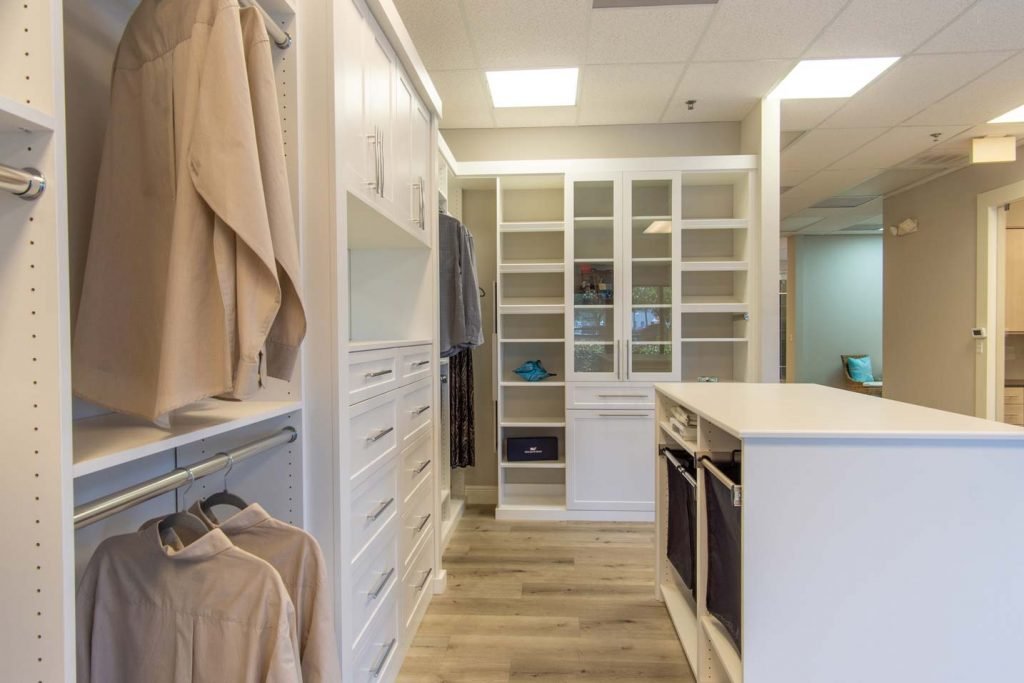
Many Florida homeowners unintentionally shorten the lifespan of their closets by overlooking small but important details. Picking untreated particleboard is one of the most common missteps, as it swells quickly in humid air and begins to crumble at the edges.
Another mistake is packing clothes too tightly. This traps moisture and prevents airflow, creating the perfect breeding ground for mildew.
Some rely on inexpensive wire shelving that lacks protective coating; while it may look fine at first, rust often sets in within a few years. Paying attention to these pitfalls can save both time and money in the long run.
Closet Types and Humidity Considerations
Different closet types face different challenges in Florida’s climate. Reach-in closets tend to be more vulnerable to moisture buildup since they have less airflow and rely heavily on the quality of shelving.
Walk-ins, while larger, need smart design with vented shelving and humidity-resistant finishes to protect a larger volume of clothing. Linen closets are especially sensitive to Florida’s climate because towels and sheets readily absorb moisture.
If you opt for melamine shelving or ventilated wire systems for linen storage, this can prevent musty odors and keep fabrics much fresher. Matching materials to closet type boosts both durability and function.
Everyday Maintenance for Humid-Resistant Closets
Even with the right materials, ongoing maintenance can help extend the life of your closet.
A few simple habits make a big difference:
- Keep a small moisture absorber or silica gel packs inside drawers or shelves.
- Avoid overcrowding clothing, which traps moisture and reduces airflow.
- Wipe down closet material surfaces occasionally with a mild cleaner to prevent buildup.
- Rotate your cedar blocks and regularly refresh them with cedar oil to maintain their protective qualities.
These small steps, combined with strong materials and smart design, will keep your closet fresh and functional year-round.
Long-Term Value
As you know, investing in the right closet materials protects your wardrobe, but it can also improve home value. Florida buyers often look for features that hold up in the climate, and a custom closet system made with humidity-resistant materials signals durability and smart design.
Just like storm-resistant windows or energy-efficient HVAC systems, closets built for Florida’s environment set a home apart and reassure future owners they won’t face premature repairs.
Built for the Florida Climate

High humidity doesn’t have to spell doom for your closets. Select the right materials, from water-resistant laminates and treated woods to rust-proof metals and cedar accents. Then, you can enjoy closets that stay strong, dry, and fresh-smelling year-round!
Rather than fighting constant warping or mildew, you’ll have peace of mind that your storage is built for the environment.
If you’re looking to upgrade or install closets in a Florida home, make sure to consult professionals who understand the local climate. Contact Coastal Closets and Showers or visit our Stuart, FL, showroom to learn more about humidity-resistant closet designs.
With expert guidance and quality materials, you can ensure your new closet will stand up to Florida’s humidity and keep your wardrobe in perfect condition.


